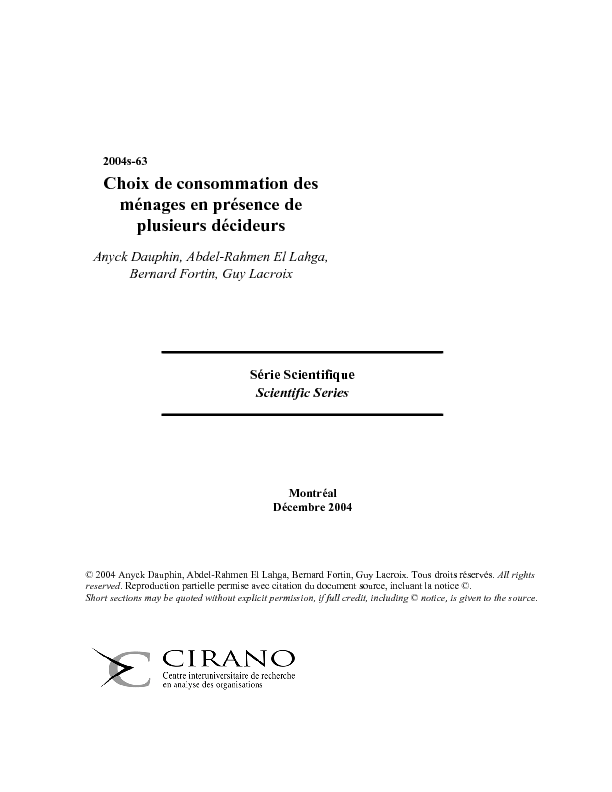Choix de consommation des ménages en présence de plusieurs décideurs
Recently, a new theoretical framework has been proposed to analyze the behavior of households composed of two adults. This approach, usually referred to has the collective model, assumes that spouses have distinct preferences and that household decisions are Pareto efficient. So far, most empirical studies based on the collective approach have focused on households made up of two decision makers thus ignoring households in which there may be more (e.g., couples with adult children or parents in developed countries, extended families in developing countries). The purpose of this paper is twofold: First we summarize the main tests that have been proposed to empirically verify the constraints that derive from the collective setting. We also present a new test that is equivalent to an existing test but that is easier to implement in certain circumstances. Second, we test the multiple-person collective model using British survey data. The sample comprises couples with a single child aged 16 or older. Our results reject the collective model with one or two decision-makers, but do not reject it when three decisions-makers are assumed.
[ - ]




